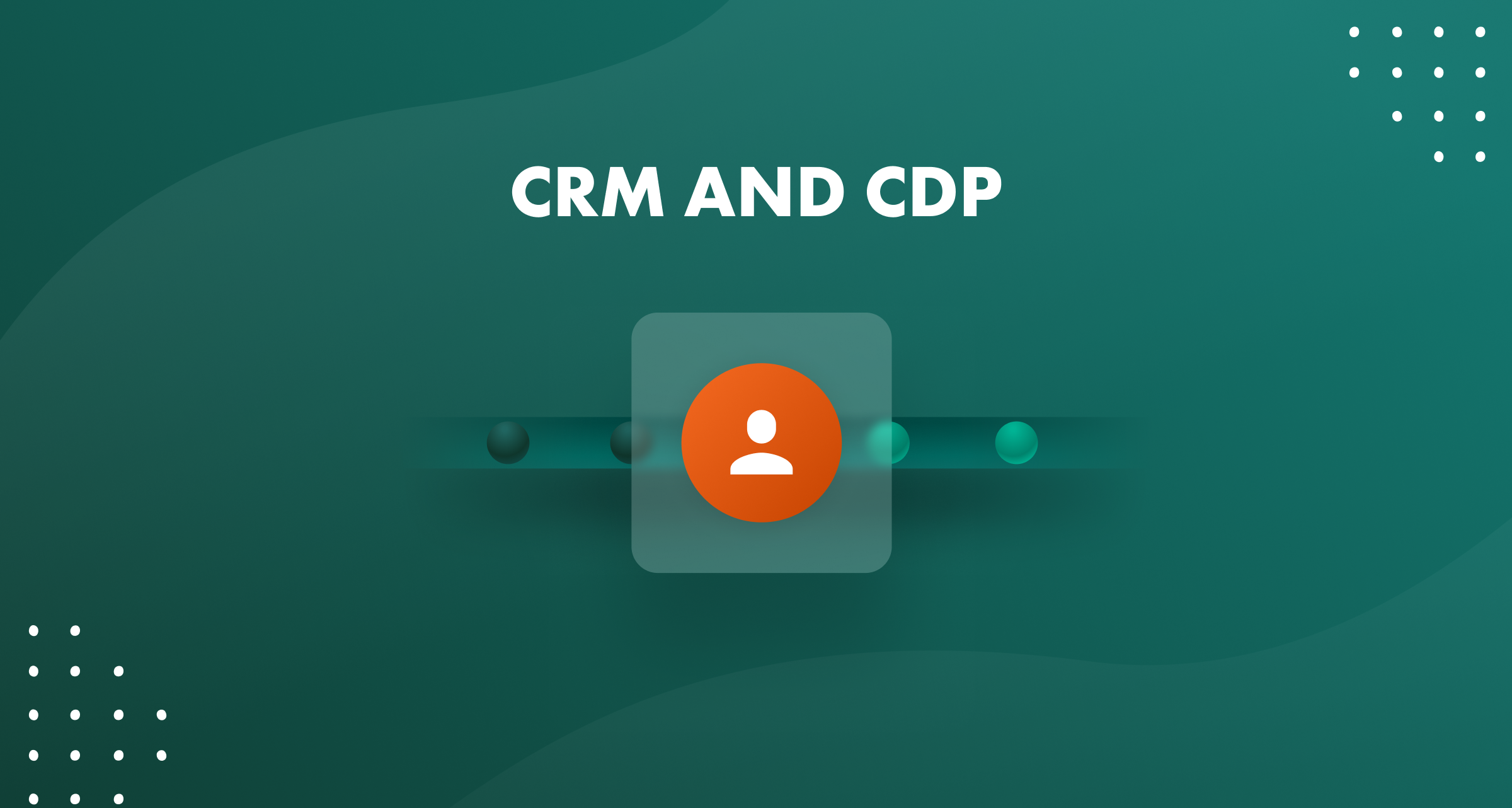If you work in B2B sales, the number one priority is to find new ways to increase revenue.
To do this, they need to sell more, which, in turn, means – they need more clients.
As a result, very often salespeople get so focused on gaining new customers that they fail to effectively address the need to retain the customers they already have.
Is new always better? Not quite.
It’s a lot cheaper to keep existing customers than acquire new ones.
And according to Marketing Metrics, the success rate of selling to an existing customer is 60-70%, while the success rate of selling to a new customer is only 5-20%!
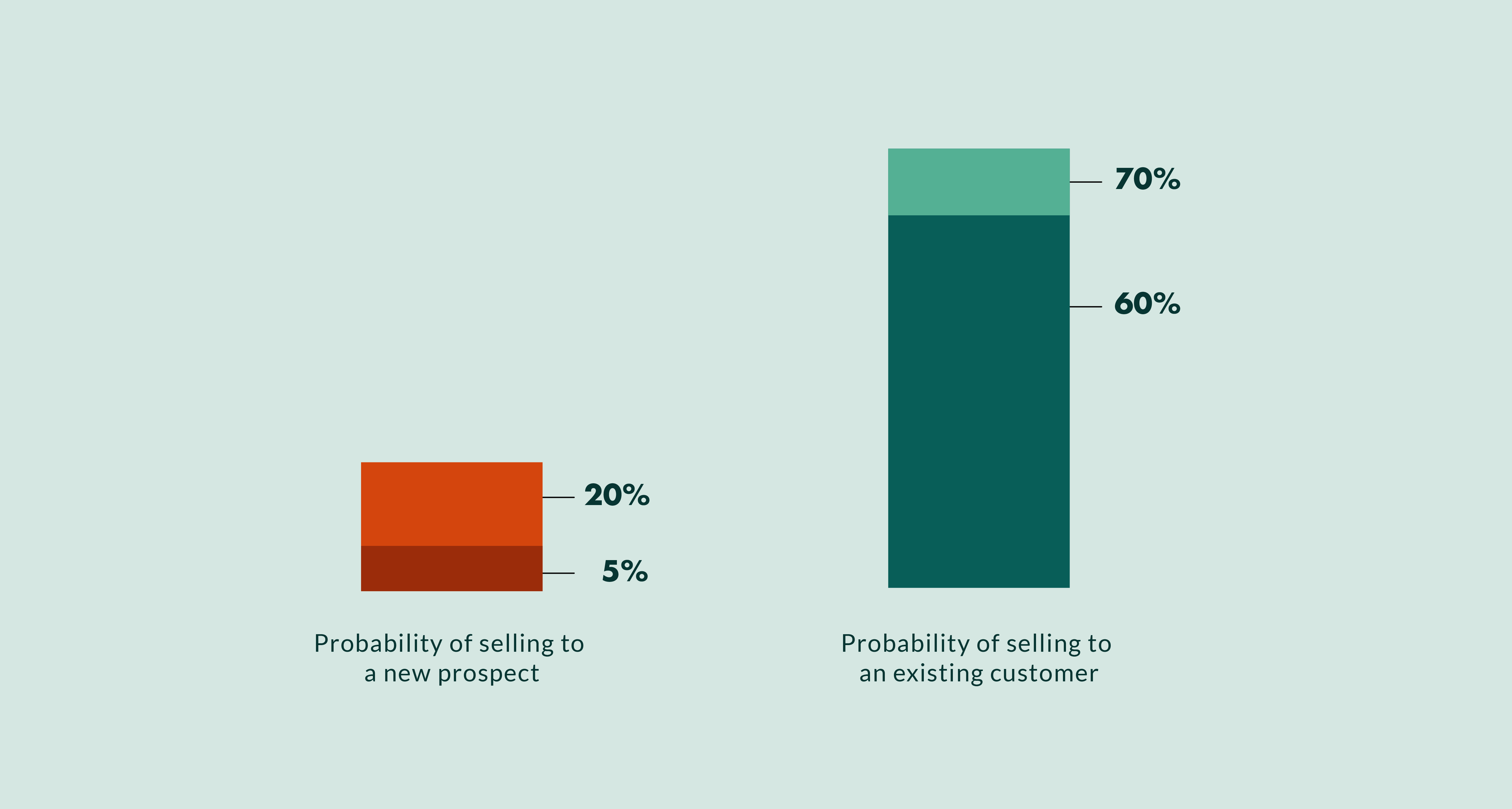
So, why do we keep on allocating most of our B2B marketing budgets on acquiring new customers?
Customer acquisition vs. customer retention
The most common pitfall for businesses around the world is that they think that if they have a great product or service, then customer retention will follow naturally.
And, while this might be the case in some instances, the harsh truth is that it’s only a short term strategy.
Put simply - if you take existing customers for granted, they will leave!
It comes down to this:
Customers want to feel valued. The moment they feel like you don’t care about them or their business - they’ll find someone else to do business with.
An even harsher truth is that, sooner or later, your customers may just … leave!
Because if you stop trying, your customers start feeling that you no longer care about them.
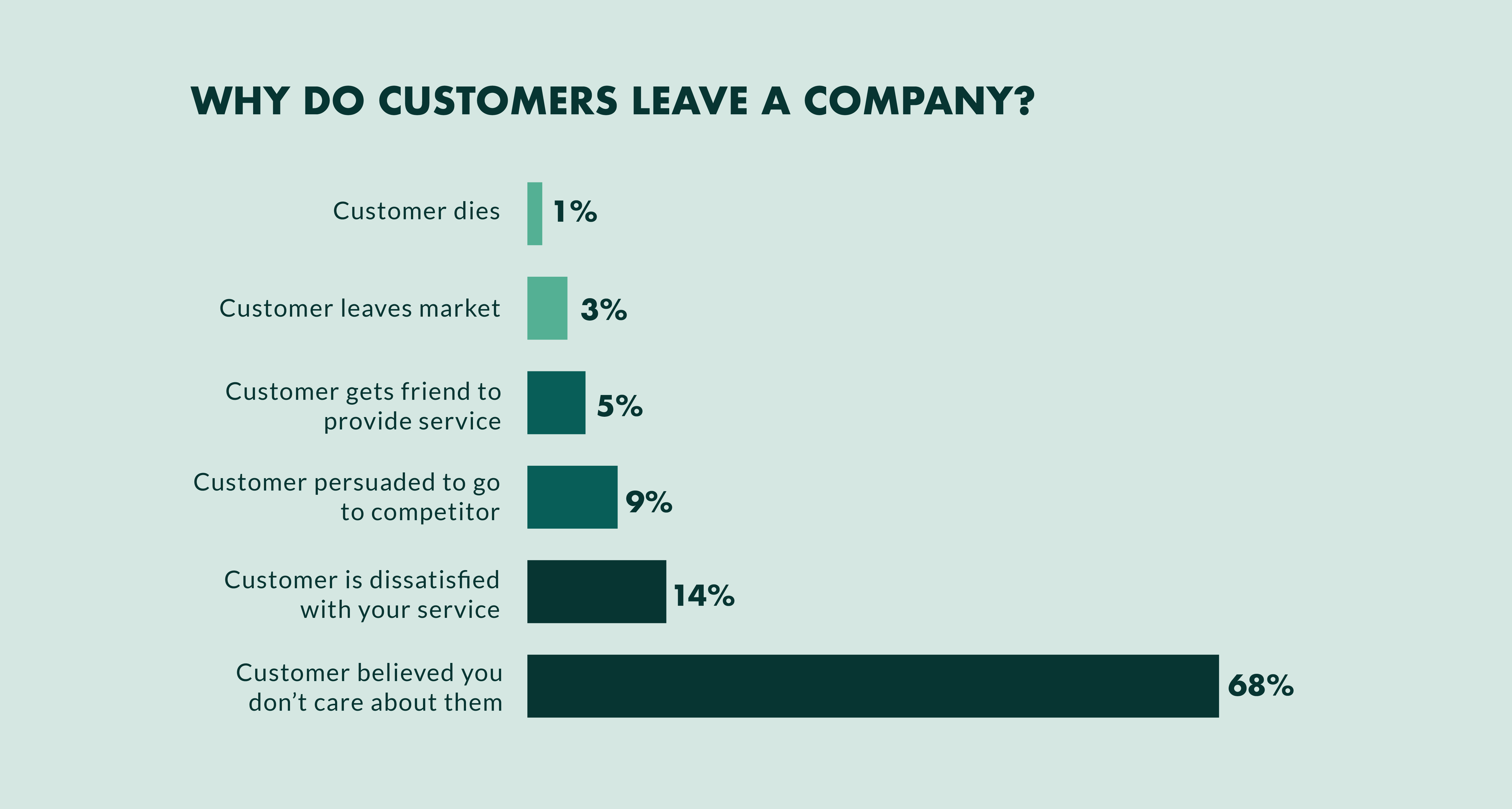
So, what’s the outtake?
You need to keep on trying and earn a customer's loyalty, continuously.
Having an effective customer marketing strategy gives you the ability to identify, track and sell more to the customers who are most likely to become your long-term sources of revenue.
The businesses that “get this” consciously invest in customer retention, because they see it as the biggest revenue driver, according to KPMG.
When focusing on the importance of customer retention, it's worth adding that 82% of companies believe that customer retention is less costly than customer acquisition.
Furthermore:
- On average, companies lose 50% of their customers every 5 years
- A typical business has a defection rate of 10-30% per year
- And yet, the reality is that 80% of marketing budgets are allocated to customer acquisition - despite acquisition costs increasing by more than 50% in the last 5 years!
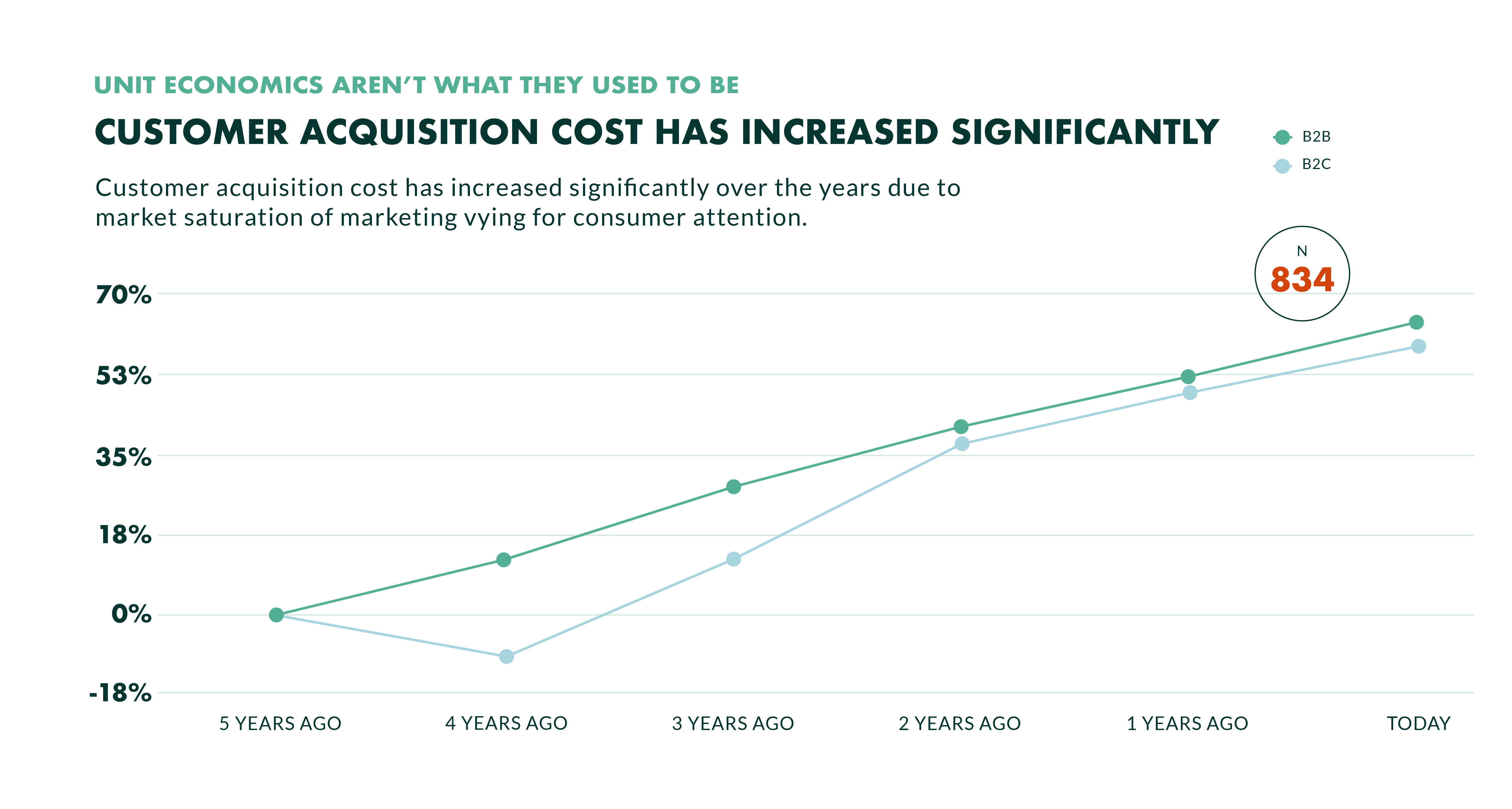 In this article, we share why and how customer retention is essential to growth, and we will also provide you with five tips and practical examples of how a CRM platform can help you carry out the ways to sell more to your existing customers.
In this article, we share why and how customer retention is essential to growth, and we will also provide you with five tips and practical examples of how a CRM platform can help you carry out the ways to sell more to your existing customers.
What is causing customers to leave?
Customers stop buying from a business for unique and personal reasons, but they tend to fall under a few similar categories.
In CallMiner’s 2020 report on Customer Churn, they identified 3 key areas that drive customers away.
- Unfair Treatment. Topping the list are customers who feel poorly treated by companies and would prefer to stay loyal if they had a better customer experience. Ineffective service automation, such as limited access to customer support, is also causing customers to feel angry and frustrated.
- Customer experience. Even though price is the greatest factor that influences churn, people are willing to stay if they are treated fairly. When another company promises a better experience at a lower price point, it’s a quick win for competitors to acquire new customers.
- Human Service. Whenever a customer has a problem they want to speak with a real person. Searching for answers on a website or interacting with a bot chat fail to address the unique needs of a customer and result in not feeling listened to and offered solutions that don’t solve their problem.
CallMiner’s report reveals a growing challenge for companies and $5 billion of avoidable churn.
Even though it will cost your company 5-25 times more to attract customers rather than keeping an existing customer, a mere 5% increase in customer retention can increase a company’s profitability by 75%!
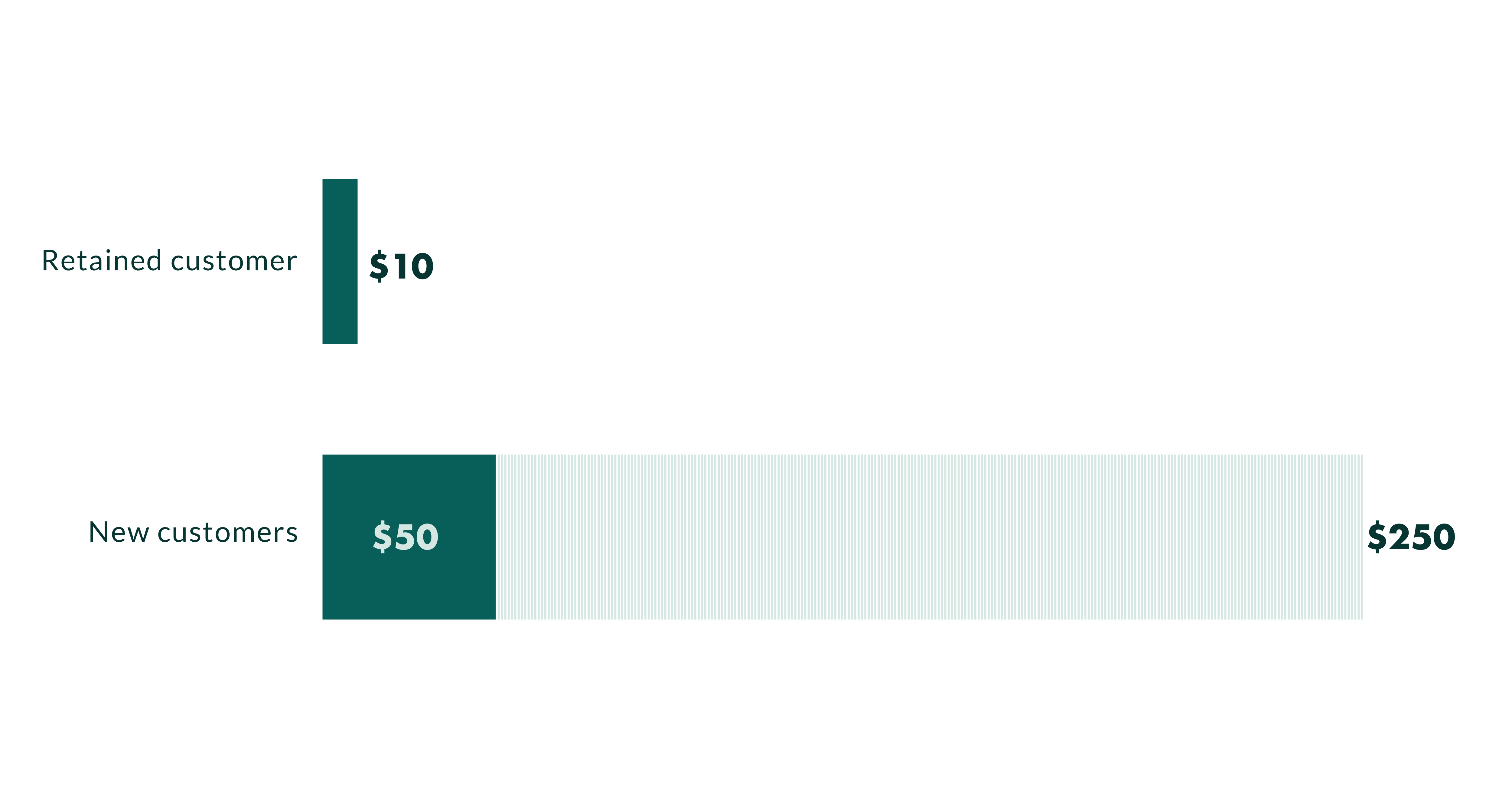 Customers are aware of the incentives being offered to grow your customer base.
Customers are aware of the incentives being offered to grow your customer base.
Regardless of the price they paid when they signed up…
By improving the customer experience and focusing more on the human touch, you can significantly reduce churn rates.
How can CRM help you improve customer retention?
When it comes to CRM, the secret lies in that one word – relationship.
CRM is about knowing your customers – who they are, how they’ve been marketed to and how they responded. If all goes well, you keep selling to them, and that’s when the fruitful relationship really starts.
And while CRM software does not manage customer retention by itself, it will provide you with the tools to help you manage the activities around customer engagement to improve the customer experience.
The question is what do you really need to do to influence customer retention?
Once you start thinking and putting your efforts into customer retention, it is essential to consider the reasons and factors that enhance repeat purchases of your product or service.
Let’s face it: customer retention strategies are not done on paper – you need to have a wide range of data and information about your customers to be able to measure and analyze your customers’ behavior.
And for that you need a CRM system!
7 practical examples of customer retention strategies
You and I are both customers.
And we both want to feel like individuals, not like units of a target group.
To be able to treat customers individually, businesses need to store a lot of information about them. That is why, having a good customer database that keeps records of all interactions and transactions is key to building long-lasting customer relationships.
Here are 7 customer retention techniques you can implement using your CRM software to keep your customers by your side and increase revenues on the side!
1. Listen to your customers
Tackling churn problems at your company starts by actively listening to what our customers are saying about their experience.
Unfortunately, there is a massive gap between companies that believe are providing a superior customer experience (80%) versus customers that believe they received a superior customer service (8%).
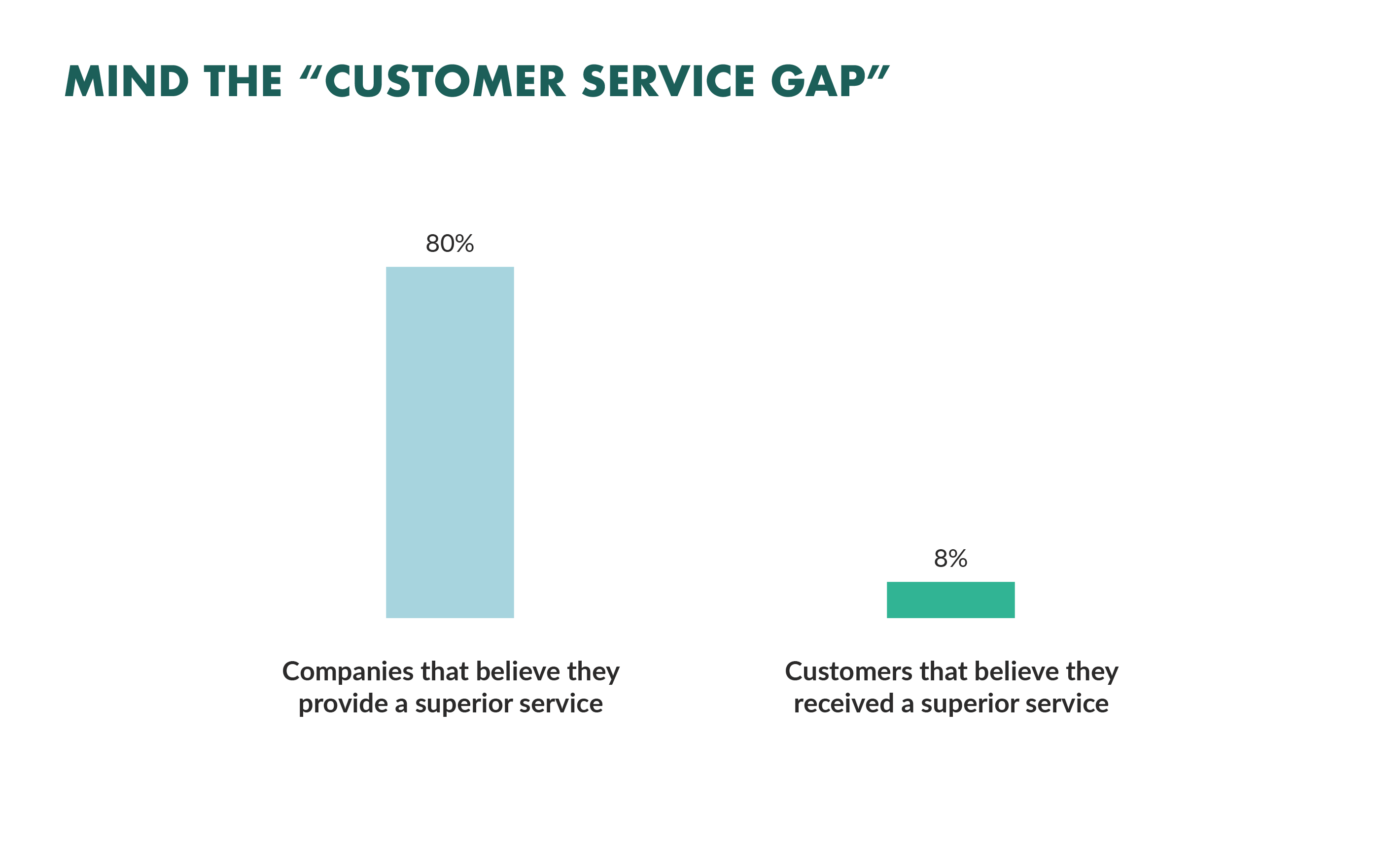
(Worse still is the fact that 62% of companies fail to respond to customer service requests).
In a report by Oracle, 89% of custumers surveyed claimed to switch to a competing brand after having a bad experience.
So what’s the best way to understand how customers feel about your company?
Ask them!
EXAMPLE: Put together a list of customers based on unique variables, such as inactive customers, most active customers, and new customers. Then, send them a quick survey to identify areas of your business that are working well or needs improvement.
According to a survey by Oracle, poor customer service is the biggest reason why customers leave. Maybe your customers aren’t feeling a connection with your company, or they don’t feel that they’re appreciated enough. Reaching out to engage with your users can help you earn their loyalty and reduce churn rate.
Was your customer service good enough? Did your product meet their expectations? Was it a good value for money? Just ask, listen and improve.
Use your customers feedback to restructure systems and processes for a better customer experience.
2. Notice churning signs in advance
The most obvious way to ensure customer retention is to prevent a customer from leaving.
If you really pay attention, you can always detect the signals of your customer’s impending departure.
To capture these “warning” signals, you need to identify the key variables of customer behavior, such as:
- Purchase patterns
- Product usage
- History of customer service enquiries
Then, you’ll need to analyze these signals and take action to stop your customers before they churn.
You’ll have to be proactive.
But the good news is that all this is possible with a CRM system.
EXAMPLE: Let’s say you want to know how many of your customers didn’t purchase anything in the last 6 months, which might be a sign of them considering quitting your services and taking their money to your competitors.
First, create a list of all of your customers, and then create a list of all sales made within the last six months using your CRM software. By comparing these lists, you end up with a list of customers who haven’t purchased from you in more than half a year.
You can now send follow up emails to these customers and find out the reasons why they are not purchasing, and prevent them from leaving your business.
3. Target customers with special offers
The more you know about your customers, the better you can tailor your approach to each individual.
One of the biggest challenges companies face today when it comes to customer loyalty and retention marketing is personalizing offers based on behavior.
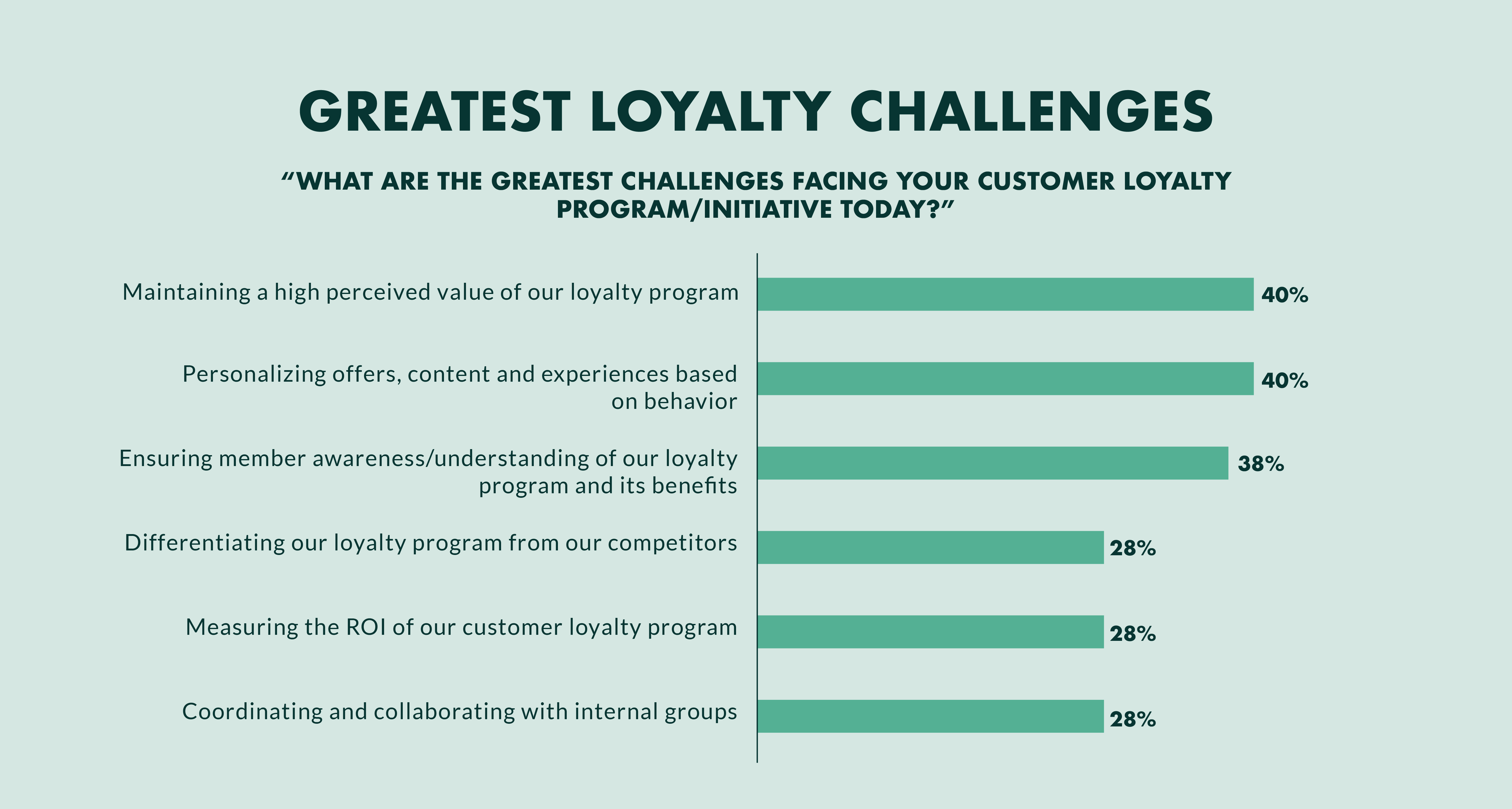 CRM software lets you view a customer’s purchase and engagement history, so that you can determine what kind of offer will be the most appealing to each individual and increase relevance - to keep your brand on your customers’ minds.
CRM software lets you view a customer’s purchase and engagement history, so that you can determine what kind of offer will be the most appealing to each individual and increase relevance - to keep your brand on your customers’ minds.
What you need right now is identify ways to revive their interest and convert it into an actual purchase.
You can do it by two ways: Offering them special discounts or some additional value for your product.
EXAMPLE: Let’s say you want to follow up on the customers who showed active interest in your product, but haven’t bought anything from for quite some time.
Using your CRM software, you can create a list of all customers who haven’t bought anything for a longer period of time, and compare it with a list of all contacts who subscribed to your newsletter.
The result is a list of contacts that are actively interested in your product, but who have not shown any signs of life for a while.
A smart (and efficient) idea could be to send them a special offer deal or a discount on a new product and make them feel that you care and haven’t forgotten about them.
4. Automate emails via trigger-based events
Customers go through different phases after making a purchase. If you can send out the right emails at certain periods of time, you can capitalize on opportunities to strengthen relationships and reduce customer churn.
Triggered-based emails tend to have 5x higher open rates and 15x higher click-through rates.
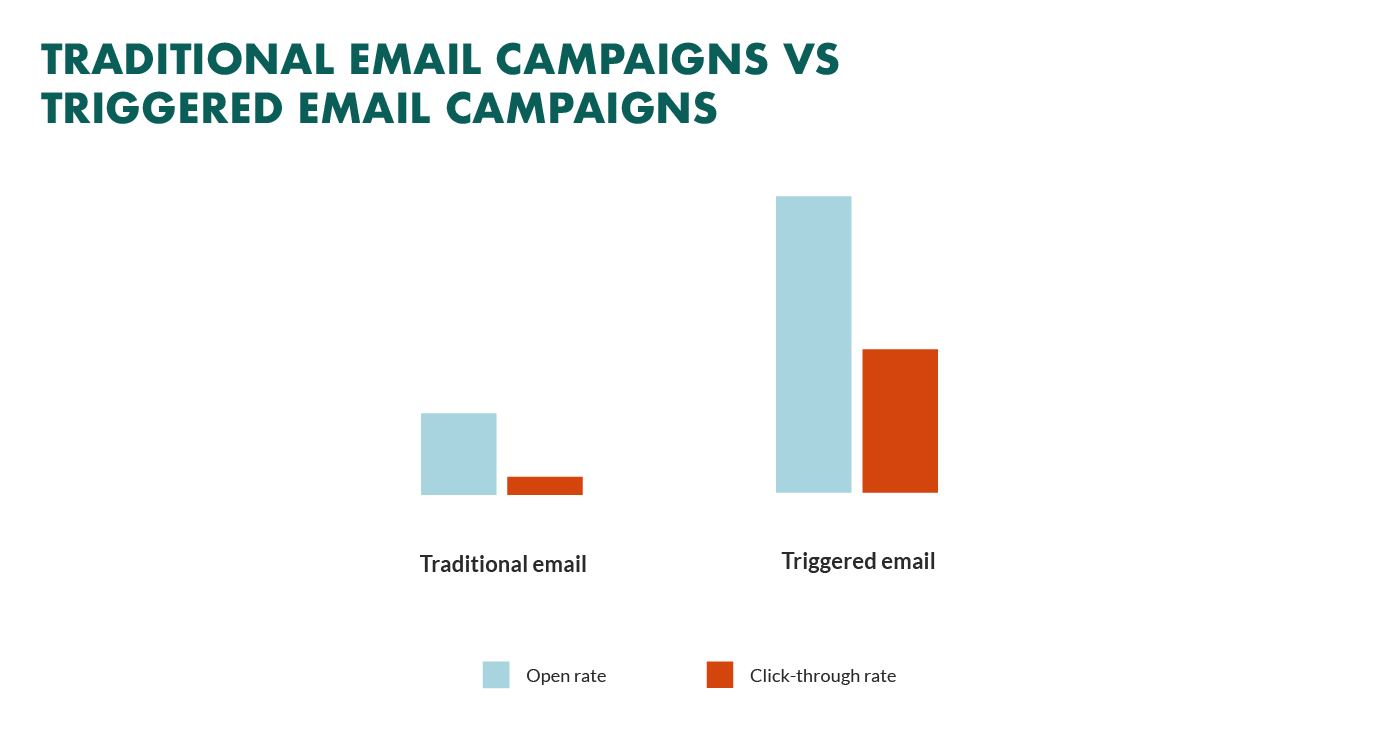
EXAMPLE: When a customer becomes inactive for a pre-defined period of time, sending an “activation” email campaign can reengage them with your business. An activation email typically includes information or tips on how to get started the product they purchased. Or, you can also use this to offer a one-on-one meeting to address any questions they may have.
Combine this strategy with information captured in your CRM database to create personalized emails sent to your customers’ birthdays, special occasions, and more.
5. Reward your most profitable (VIP) customers
Information gathered in the CRM software can tell you which of your accounts are your most profitable. These are the customers you really don’t want to let go of, your key accounts. For this purpose, let’s call them the VIPs.
Knowing who brings you the most revenue allows you to allocate your time and resources efficiently, as well as increase your chances of cross-selling or up-selling.
EXAMPLE: Let’s say you have a number of incentives to give away. Use them to reward your VIPs to further increase their loyalty.
It’s easy: just create a list of your VIP customers in your CRM software. Now, you can start to follow up and let them know about the rewards and incentives in order to make them feel special, so they continue to be your most profitable customers, which, if you consider the 80/20 rule, this investment is bound to pay off!
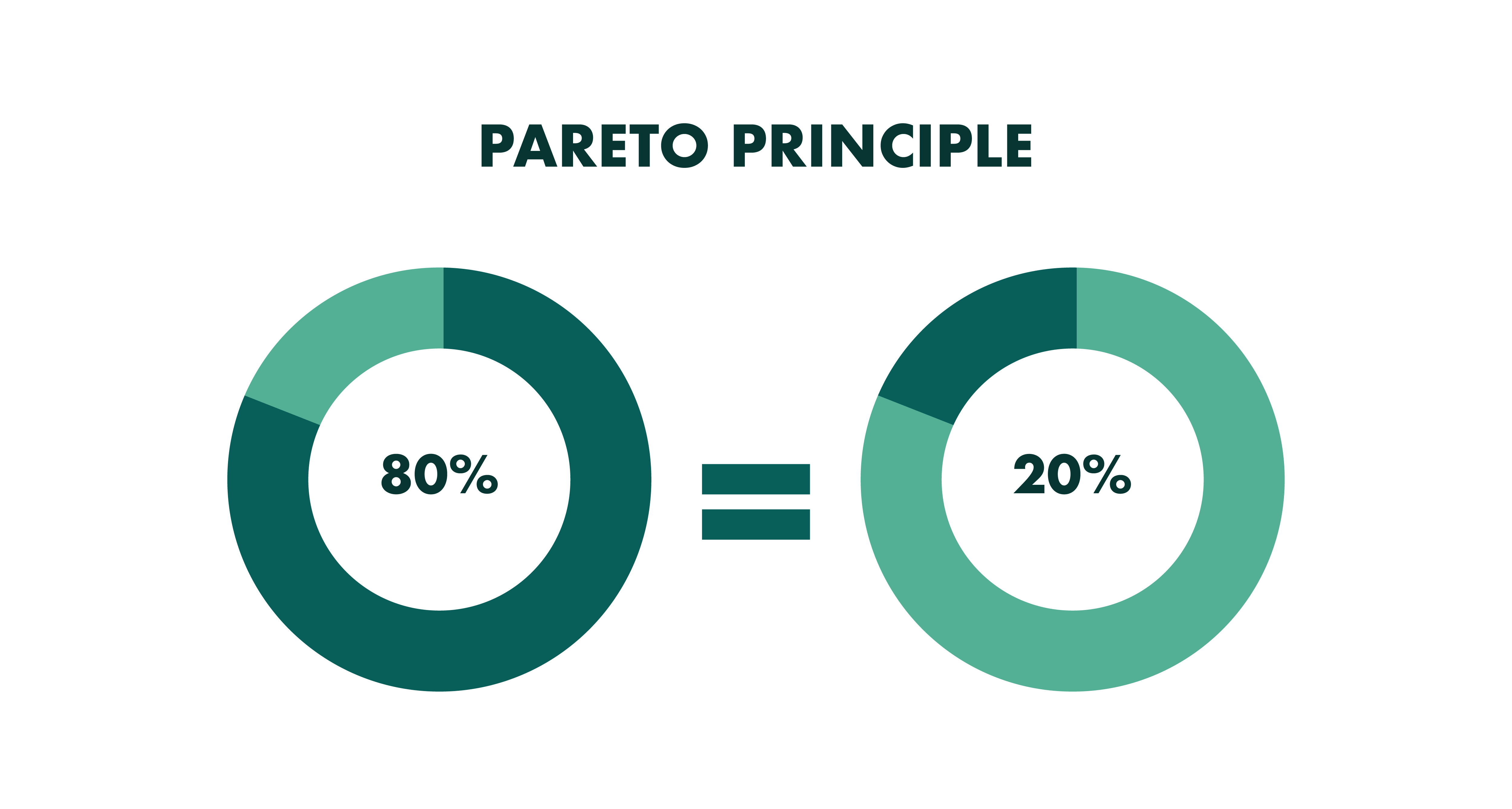
6. Personalize your follow-ups
A relationship is something that is established between people, and CRM software makes it easier for you to see your customer as a person and not just a number.
When you register a new customer in a CRM, use the information given, providing it's with their consent, so you can personalize the communication in the future. The more information you have, the easier it will be to tailor your follow-up strategies.
The effects of personalization cannot be understated, as research from V12 found that personalization delivers 5-8X ROI.
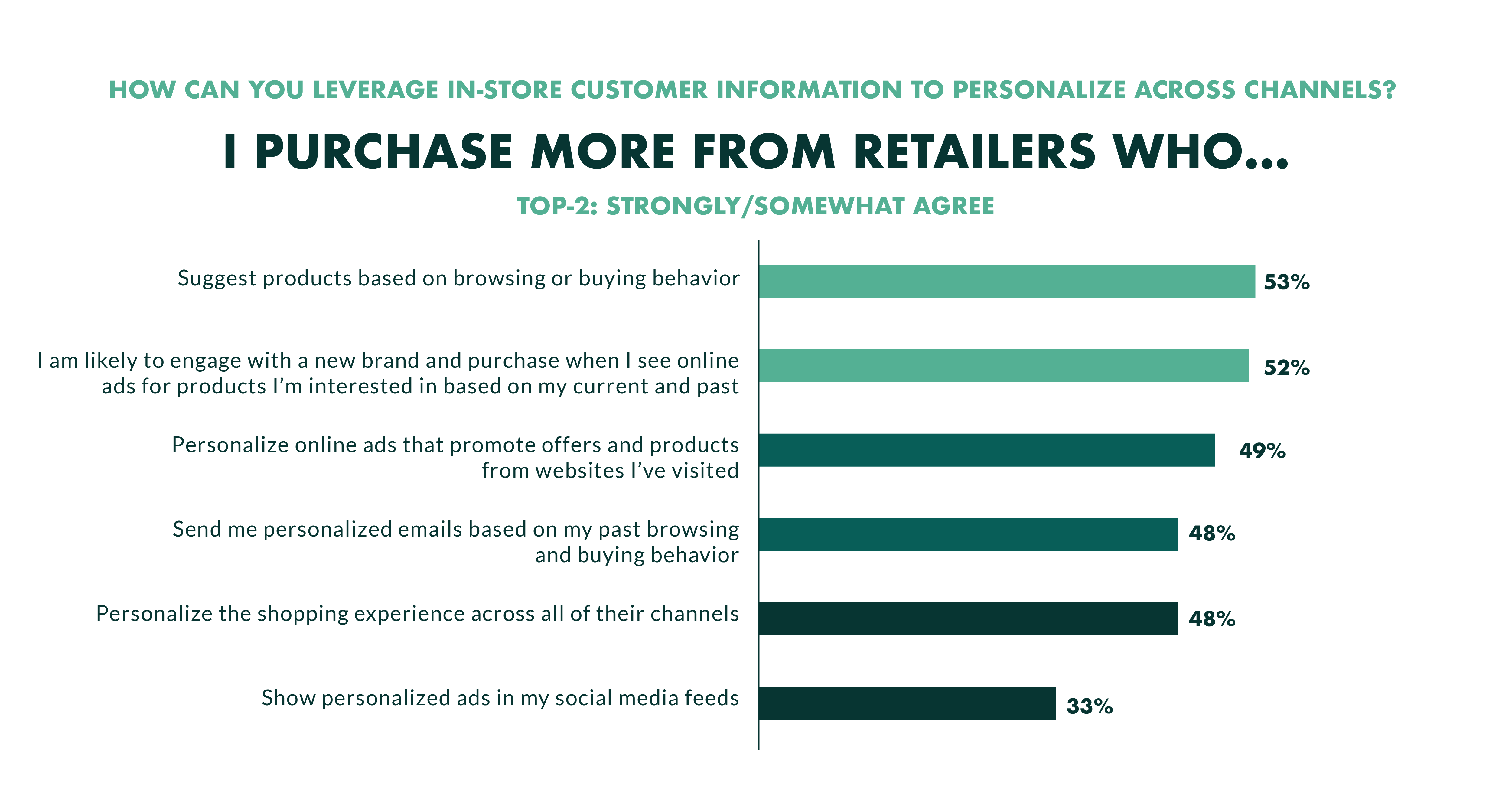
You can personalize communication based on purchase history, user preferences and other relevant information typically found in CRM software.
EXAMPLE: Let’s say you’ve met most of your customers already during the trade seminars you organize. However, there are still some decision makers who haven’t come to your seminars and, therefore, you want to contact them for individual follow-ups or maybe up-selling.
How do you do that?
How do you do that?
- Create a list of all of the contacts you have registered in the CRM software.
- Next, create a list of all customers who have attended your seminars during the last twelve months.
- By combining those two lists, you are left with a set of contacts who have not attended your seminars.
Now, you know who to follow up on with a personal invitation!
7. Keep your follow-up promises
Keeping your promises is the ultimate sign of professionalism in business.
The scheduling features in a CRM software allow you to schedule follow-up calls or emails in advance, or assign follow-up tasks to members of your team. By doing this, you’ll be able to keep track of your appointments, as well as complete any tasks that you said you’d do when you said you’d do them.
EXAMPLE: Let’s say you have a list of customers that you need to catch up with and possibly update their information.
Time flies and … now it’s time to do it! But, you check your schedule and you see that you won’t be able to keep your promises to customers on time. In this case, you can always assign some of your colleagues to follow up on these customers and, with just a few clicks, create follow-ups in their diaries.
Conclusion
Even though gaining new customers is a sign of business growth, losing customers is simply too expensive, as the average global value of a lost customer is $243!
Your existing customers give you a great chance to increase your profits, as they are more likely to buy from you, than prospects.
And in order to make it happen, you need a tool to keep your relationships alive – a CRM.
With the help of a CRM software, you can gather and manage information on your customers, your sales pipeline and also manage activities around customer engagement.
Use the data that the CRM software provides to not only retain customers, but also to keep them happy and grow profits – all without the added expense of acquiring new customers.
The more customers you retain, the higher your profits will be.
Ready to get started? Sign up and get a free personalized demo to see how you can use CRM software to retain your customers and increase profits.




